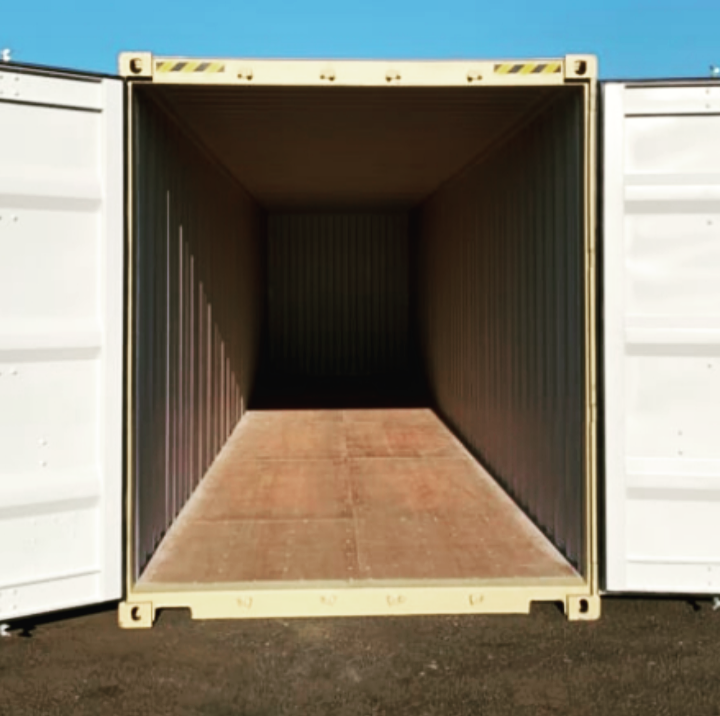Shipping Container Flooring Options: Best Materials for Durability and Safety
Shipping containers are widely used for storage, transportation, and even creative projects like container homes, offices, workshops, pop-up retail spaces, and mobile restaurants. One of the most important aspects of modifying a shipping container is choosing the right shipping container flooring. The flooring must be durable, resistant to moisture, pests, and heavy loads while also being cost-effective and easy to maintain. Whether you’re looking for eco-friendly flooring options, heavy-duty industrial flooring, insulated flooring solutions, or low-maintenance flooring materials, this guide will help you explore the best shipping container flooring options that suit both functional and aesthetic needs.
Why Flooring Matters in Shipping Containers
The flooring in a shipping container must withstand heavy loads, temperature changes, moisture exposure, and potential chemical spills. Standard shipping containers typically come with marine plywood flooring, which is treated with pesticides to prevent insect infestations and protect against rot. However, for storage, office spaces, workshops, commercial units, or living quarters, alternative flooring materials may be required for better durability, enhanced safety, improved insulation, and modern aesthetics. Additionally, factors such as fire resistance, ease of maintenance, and sustainability should be considered when selecting the ideal flooring. If you’re converting a shipping container into a home, office, or business space, choosing the right flooring material is crucial for comfort, energy efficiency, and long-term performance.

Best Shipping Container Flooring Options
Original Marine Plywood Flooring
✅ Best for: General storage, shipping, and basic modifications
Most shipping containers come with 1-1.1 inch thick marine plywood flooring, which is durable and resistant to moisture. However, because it is often treated with chemical preservatives, it may not be suitable for residential or food storage applications. If using marine plywood in a home or office setting, sealing or covering it with another material is recommended.
🔹 Pros:
✔️ Durable and moisture-resistant
✔️ Comes pre-installed in most containers
✔️ Strong enough for heavy loads
🔹 Cons:
❌ Contains chemical treatments (not ideal for homes)
❌ Can absorb moisture over time
👉 Best for: Short-term storage and industrial use, but may require sealing for long-term projects.
Epoxy-Coated Plywood Flooring
✅ Best for: Warehouses, workshops, container offices, garages
Applying an epoxy coating to marine plywood is a cost-effective way to improve its durability, water resistance, and chemical resistance. Epoxy flooring is ideal for high-traffic areas and industrial applications where spills, heavy loads, or abrasion are common.
🔹 Pros:
✔️ Water-resistant and easy to clean
✔️ Protects against chemical exposure
✔️ Enhances durability and longevity
✔️ Provides a non-slip surface when textured
🔹 Cons:
❌ Requires proper application and drying time
❌ Can be expensive for large containers
👉 Best for: Industrial use, workshops, and container offices where durability and chemical resistance are needed.
Vinyl Flooring (Luxury Vinyl Plank - LVP)
✅ Best for: Container homes, offices, and retail spaces
Vinyl plank flooring (LVP) is a stylish and durable option for shipping container modifications. It is waterproof, scratch-resistant, and easy to install. Vinyl flooring mimics hardwood or tile but is more affordable and requires less maintenance.
🔹 Pros:
✔️ Waterproof and stain-resistant
✔️ Available in various colors and styles
✔️ Easy to install with adhesive backing
✔️ Comfortable underfoot compared to hard surfaces
🔹 Cons:
❌ Can be damaged by extreme heat
❌ Not as strong as hardwood or metal options
👉 Best for: Residential container homes, offices, and commercial spaces looking for a modern aesthetic.
Bamboo Flooring
✅ Best for: Eco-friendly container homes and offices
Bamboo flooring is an eco-friendly, durable alternative to traditional hardwood. It offers a natural look and is highly resistant to moisture and pests, making it an excellent option for shipping container homes and modular offices.
🔹 Pros:
✔️ Sustainable and renewable material
✔️ Stronger than traditional hardwood
✔️ Resistant to moisture and insects
✔️ Aesthetic appeal for modern designs
🔹 Cons:
❌ Can be expensive
❌ Requires professional installation for best results
👉 Best for: Environmentally conscious projects and stylish container conversions.
Steel or Aluminum Flooring
✅ Best for: Heavy-duty storage, industrial use, and high-traffic areas
Metal flooring, such as steel or aluminum plates, is among the most durable shipping container flooring options. It provides excellent resistance to water, fire, and heavy loads, making it ideal for industrial and commercial storage containers. However, it can be cold and noisy without proper insulation.
🔹 Pros:
✔️ Extremely durable and long-lasting
✔️ Fire-resistant and waterproof
✔️ Supports heavy equipment and machinery
✔️ Ideal for extreme environments
🔹 Cons:
❌ Expensive compared to wood and vinyl
❌ Cold and noisy without insulation
👉 Best for: Industrial use, heavy machinery storage, and environments where fire resistance is crucial.
Insulated Raised Flooring
✅ Best for: Cold climates, temperature-sensitive storage, comfortable container homes
If your shipping container is located in extreme weather conditions, adding insulated raised flooring can help regulate interior temperatures and reduce moisture buildup. This method involves installing a raised subfloor with rigid foam or spray foam insulation beneath it.
🔹 Pros:
✔️ Helps regulate temperature and energy efficiency
✔️ Prevents condensation and mold growth
✔️ Increases comfort for residential use
✔️ Ideal for refrigerated containers
🔹 Cons:
❌ Requires additional materials and labor
❌ Reduces internal height slightly
👉 Best for: Climate-controlled storage, refrigerated containers, and container homes in colder regions.
Flooring Recommendations Based on Industry Needs
For Construction and Industrial Use
If you’re using a shipping container for construction sites, heavy-duty workshops, or industrial storage, durability and weight resistance are key. Steel or aluminum flooring is the best option due to its high load-bearing capacity and fire resistance. For improved safety, consider adding an anti-slip coating to prevent accidents.
For Retail and Pop-Up Shops
Businesses that convert containers into retail stores, pop-up shops, or kiosks need an attractive and functional flooring solution. Luxury Vinyl Plank (LVP) provides a modern aesthetic, durability, and ease of maintenance, making it ideal for high-foot-traffic areas.
For Shipping Container Homes and Offices
Comfort, insulation, and style matter when designing container homes and offices. Bamboo flooring or insulated raised flooring helps regulate temperature while offering a sleek, eco-friendly finish. Adding radiant heating beneath the flooring can enhance comfort, especially in colder climates.
For Agriculture and Cold Storage
Containers used for agricultural storage, refrigerated containers, or cold storage units should have moisture-resistant and insulated flooring. Epoxy-coated plywood or rubberized flooring works best to prevent condensation, mold, and bacterial growth.
Final Thoughts: Choosing the Right Shipping Container Flooring
The right shipping container flooring option depends on your specific needs, budget, and environmental conditions. For durability, metal flooring is best, as it offers high resistance to wear and tear, making it ideal for industrial and heavy-duty applications; for aesthetics, luxury vinyl plank (LVP) or bamboo flooring creates a stylish and modern look; and for affordability, epoxy-coated marine plywood provides a budget-friendly yet durable solution. If your goal is eco-friendly flooring, bamboo and reclaimed wood flooring are excellent options, while insulated raised flooring is best for extreme weather conditions, helping to maintain temperature control and improve energy efficiency. Additionally, consider anti-slip coatings for safety, especially in high-traffic areas or regions with frequent moisture exposure. Choosing the right flooring can elevate your shipping container project, ensuring it is both functional and visually appealing.
By selecting the right flooring, you can improve safety, extend the lifespan of your container, and enhance comfort for any application, whether it’s a container home, office, storage unit, or workspace.
FAQs About Shipping Container Flooring
What is the most durable flooring for a shipping container?
Steel or aluminum flooring offers the highest durability but can be expensive.
Can I use carpet in a shipping container home?
Yes, but it’s not recommended due to moisture retention. Use waterproof underlayment to prevent mold.
How do I protect my shipping container floor from moisture?
Apply an epoxy coating, use moisture-resistant vinyl flooring, or add insulation beneath raised flooring.
Is bamboo flooring good for shipping containers?
Yes, bamboo is eco-friendly, durable, and moisture-resistant, making it a great choice for container homes.
By carefully selecting your flooring, you can maximize the performance, safety, and comfort of your shipping container project!
Internal Links to Explore Further
- What are standard shipping container sizes?
- How Much Weight Can a Shipping Container Hold?
- Difference Between 20ft and 40ft Shipping Containers: Which One Is Right for You?
- High Cube vs Standard Shipping Container: Which One Fits Your Needs Best?
- What Is an Insulated Shipping Container? (And How It Differs from Refrigerated Containers)
- Shipping Container Door Options: What Are the Best Alternatives to Side-Door Containers?
- Shipping Container Ventilation Requirements – A Comprehensive Guide for the US Market
- Best Materials for Shipping Container Walls – A Comprehensive Guide for Your Container Conversion Project
- 20ft shipping container: A full guide
- 40ft Standard Container: A full guide
Get quote!

No strings attached 💯